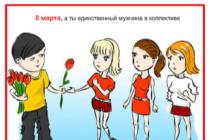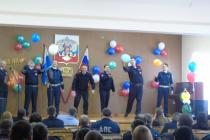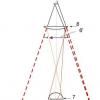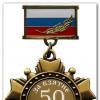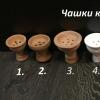Trading transactions can be divided into two main categories: sales transactions and purchase transactions. The way these transactions are accounted for is slightly different between periodic and perpetual inventory systems. Before considering these transactions, it is necessary to introduce some terms related to the sale of goods.
When goods are sold on credit, both parties must be aware of the amount and timing of payment, as well as other conditions of the purchase, such as who pays shipping or freight charges, and what guarantees or rights to return the goods are. Trade enterprises indicate the prices of their goods in different ways. Many of them quote the prices at which they expect the goods to be sold. Others, especially manufacturers and wholesalers, provide a price list or catalog and quote prices at a percentage discount (usually 30 percent or more) from the list or catalog prices. Such discounts are called trade discounts. For example, if the price of an item was 1,000 and the trade discount for it was 40 percent, or 400, then commercial enterprise will record a sale at 600 and the buyer will record a purchase at 600.
If a merchant wants to change the selling price of a product, the trade discount can be raised or lowered. Sometimes trade discounts may vary depending on the volume of purchases. The price list and their respective trade discounts are only used to calculate the agreed price; they do not appear in the records.
The terms of sale are usually stated on the sales invoice and thus form part of the sales contract. Standard conditions vary by industry. In some industries, payment must be made within a short period, such as 10 or 30 days. In these cases, the invoice is marked "n / 10" or "n / 30" (read "net ten" or "net thirty"), which means that the amount indicated in the invoice must be paid after 10 or after 30 days after invoice date. If the invoice must be paid 10 days after the end of the month, then it is marked "n / 10 sq.m.".
Early payment discounts are common in some industries. Such discounts, called sales discounts, are designed to increase the liquidity of the selling enterprise by reducing the volume Money, "frozen" in accounts receivable. An invoice offering a sales discount may show "2/10, n/30", meaning that the buyer can either pay the invoice within 10 days of the invoice date and receive a 2% discount on the price that does not include the cost of transportation, or may wait 30 days and then pay the full cost of the invoice. It is almost always better for the customer to take advantage of the discount, because the 2 percent savings over a period of 20 days (from day 11 to day 30) represents an effective annual rate of 36 percent (360 days-20 days * 2% = 36%).
Most companies are more profitable to borrow money in order to take advantage of the discount. The practice of discounting sales is decreasing because it is expensive for sellers and, from the point of view of buyers, the amount of the discount is small compared to the purchase price. Accounting for sales discounts is discussed in an additional section at the end of this chapter.
In some industries, it is customary for the seller to pay the cost of transportation and set a price that includes these costs. In other industries, the buyer usually pays the shipping costs for the delivery of the goods. Special conditions it is stipulated who pays the transport costs: the seller or the buyer. So the terms FOB point of shipment mean that the supplier places the goods "free on board - free on board" at the point of origin, and the buyer pays the cost of transportation. At the same point, the ownership of the goods passes to the buyer.
For example, if the contract of sale for the purchase of a car says "FOB factory", then the buyer must pay for transportation from the place where the car was made to its location, and the buyer passes ownership of the car from the moment when she leaves the factory. FOB Destination means that the supplier pays the shipping costs to the place where the goods are delivered. Ownership remains with the supplier until the goods reach their destination and usually the amount transport costs prepaid by the supplier, so the buyer does not make any accounting entries for the cost of transportation. The consequences of these special conditions of carriage are summarized below:
Operations related to the purchase of goods
The main difference between perpetual and periodic inventory systems is that with a perpetual inventory system, the inventory account is constantly changing because purchases, sales, and other inventory transactions are reflected in this account as they are made. Purchasing increases the Inventory account, while returning purchased items decreases it.
As sales of an item are made, the cost of those items is transferred from the Inventory account to the Cost of Goods Sold account. Under a periodical inventory system, the Inventory account remains at the initial level until the physical inventory is posted at the end of the period. To accumulate purchases of goods during the accounting period, the Purchases account is used, and the Purchase Returns and Discounts account is used to accumulate purchase returns and purchase discounts. To illustrate these differences, below are the purchases made by Fenwick Fashion Corporation. Differences between the two systems” are in bold.
Oct. 3- Purchased Nibok goods on credit, invoice dated October 1, terms n/10, FOB shipping point, amount 4,890.
Under a periodic inventory system, the Purchases account is a temporary account. Its only task is to accumulate the total cost of goods bought for resale during the accounting period. (Purchases of other assets, such as equipment, should be shown in the appropriate asset accounts, but not in the Purchases account.) The Purchases account does not indicate whether items have been sold or are still available. With a perpetual accounting system, the Purchases account is not needed, since purchases are reflected directly in the Inventory account.
Oct. 4- Received an invoice from the Transfer Freight company for the cost of transportation for shipment on October 3, the invoice is dated October 1, conditions n/10, amount 160.

IN this example, although the shipping company invoices separately for the cost of transportation, it is part of the cost of acquiring the goods and should be included in the Purchasing or Inventory account. However, since most consignments of goods are made up of many different items, it is usually impractical to determine the exact cost of transporting each item. As a result, the costs of transporting purchased goods are usually accumulated on the account "Transportation of purchased goods" both under the system of periodic accounting and continuous accounting.
In some cases, the seller pays the shipping costs and bills them to the buyer as a separate item on the invoice. In these cases, the same postings are made as for October 3 in the example above; in addition, the account "Transportation of purchased goods" is additionally debited for the amount of transportation costs, and the account "Accounts payable" is increased by the same amount.
Oct. 6- Returned goods received on credit from Nibok on October 3, in the amount of 480.
If the seller sends a defective item or the item does not satisfy the buyer for some other reason, then the buyer may be allowed to return such item, and the money will be returned or credited to his account; or the buyer may be given a discount on the selling price of the item. Under a periodic inventory system, the amount of the return or discount is posted to the Purchase Returns and Discounts account. This account is a contra-account to the purchase account. It usually has a credit balance and is deducted from purchases on the income statement. Under a perpetual inventory system, returned items are removed from the inventory account.
Oct. 10- Paid in full the amount owed to Nibok for a purchase made on October 3rd, part of which was returned on October 6th.
Payments for purchased goods are the same under both systems.
Operations related to the sale of goods
The main difference in accounting for transactions related to sales under continuous and periodic accounting systems relates to the account "Cost of goods sold". Under a perpetual accounting system, at the time of sale, the cost of goods is transferred from the Inventory account to the Cost of Goods Sold account. In the event of a return, it is transferred back from the Cost of Goods Sold account to the Inventory account. Under a periodic inventory system, the Cost of Goods Sold account is not used because the Inventory account is not updated until the end of the accounting period. To illustrate these differences, below are the sales transactions made by Fenwick Fashion Corporation. Differences between the two systems are shown in bold.
Oct. 7- Goods sold on credit to Gonzales Distributor, terms n/30, FOB destination, amount 1,200; cost of goods 720.

Merchandise sales are handled in the same way under both inventory systems, except that under the perpetual inventory system, the Cost of Goods Sold account is updated with transfers from the Inventory account. Sales for cash will debit the Cash account, not Accounts Receivable, for the amount of the sale.
.
Oct. 8- Payment of transportation costs on sales from October 7 in the amount of 78.
Sellers often take on shipping or shipping costs in the belief that this will help sell their products. These costs are accumulated in an account called "Shipping Costs" or "Sold Goods Freight" and shown as a sales expense on the income statement.
Oct. 9 - Goods sold on October 7 were accepted from Gonzales Distributor and returned to stock, amount 300; cost of goods 180.

Because returns and discounts to customers on low-quality or unsatisfactory products are often an indicator of customer dissatisfaction, these amounts are accumulated under both methods in the Sales Returns and Discounts account. This account is a contra account with a debit balance and is deducted from sales on the income statement. Moreover, under a perpetual accounting system, the cost of goods must be transferred from the Cost of Goods Sold account to the Inventory account. If discounts are made in lieu of taking the item back, or if the items cannot be returned to inventory and resold, then no such carryover will occur.
Nov. 5 - Received full payment from Gonzales Distributor for merchandise sales on October 7th minus return on October 9th.
Account receipts are accounted for in the same way under both systems.

The cost includes transportation of purchased goods.
Impact of the Perpetual Inventory Accounting System on the Profit and Loss Statement
Profit and loss statement of a trading company, shown in ill. 4-1 uses a periodic inventory system. This can be determined by the presence of estimates of net cost of purchases and inventory data at the beginning and end of the period. Under a perpetual inventory system, these items are replaced by the Cost of Goods Sold account. Fenwick Fashion's gross profit would be presented as shown in . In this example, the transportation of purchased goods is included in the cost of goods sold. Theoretically, transportation of purchased goods should be split between inventory at end and cost of goods sold, but most companies do not disclose this amount on the income statement because it is relatively small.
Stock Loss
Many companies suffer inventory losses due to spoilage, shoplifting, and petty theft by their employees. When such losses occur, the periodic inventory system provides no means of tracking them, as these costs are automatically included in the cost of goods sold. For example, suppose a company suffers a loss of $1,250 due to theft of goods during an accounting period. During inventory, these items will be out of stock and remain uncounted. Since they will not be included in inventory at the end of the period, the amount deducted from the cost of available-for-sale items will be less than if the items were in stock. Therefore, the cost of goods sold is overpriced by 1,250. Therefore, the cost of goods sold is increased by the amount of lost inventory.
The use of a perpetual inventory system makes it easier to detect such losses. Since the Inventory account is constantly updated with sales, purchases, and returns of goods, the loss will be revealed in the difference between the inventory records and the actual inventory data taken at the end of the accounting period. As soon as losses are discovered, it is necessary to adjust the inventory at the end of the period by crediting the Inventory account. The offsetting entry is usually made to the debit of the Cost of Goods Sold account, since losses are treated as costs that reduce the company's gross profit.
A trading company could suffer significant cash and inventory losses if it does not take steps to protect its assets. in the best way there will be implementation and maintenance of the internal control system.
business practice
In some industries, a high percentage of return on sales is accepted business practices. Harper Collins will publish and ship more copies of the bestseller than it is supposed to sell, because in order to get attention potential buyers, it is necessary that these books be distributed in different outlets: bookstores, department stores and discount stores. As a result, the return of unsold books can reach 30-50% of those shipped. The same selling principle applies to the sale of magazines in kiosks, such as Fortuna magazine, and popular record companies such as Virgin. In each of these cases, management carefully reviews the Sales Returns account to reduce returns and improve profitability.
- this is a special activity of people associated with the implementation of acts of sale and is a set of specific technological and economic operations aimed at servicing the exchange process.
The social division of labor and the allocation of commercial capital from the total industrial capital singled out trade into a separate independent branch of the economy and economy.
Main functions of trading:
- sale of produced (goods). The performance of this function creates an economic prerequisite for the reproduction of the total social product and links production with consumption;
- bringing commodities to consumers. It is precisely through trade that the spatial movement of goods from producers to consumers takes place, and in trade, production processes continue in the sphere of circulation (namely, transportation, storage);
- maintaining a balance between supply and demand. At the same time, trade actively influences production in terms of the volume and range of goods produced;
- reduction in the sphere of consumption (costs of buyers for the purchase of goods) by improving the technology of sales, information services, etc.;
- functions related to the implementation of marketing, namely: market research, price determination, creation of services, product development, etc.
The process of exchanging goods for money and other goods accompanies man for almost his entire history. Despite such antiquity, the forms and functions of trade remain unchanged already. long time, Although technical progress contributes to the modernization of this process.
concept
The movement of goods from the producer to the consumer cannot do without an intermediary, which is trade, the types and functions of which are formed as a result of the formation of markets and the division of labor. In its most general form, this concept can be defined as a sphere human activity, which ensures the turnover, the movement from the sphere of production to the sphere of consumption.
For a business, trading is one of the most profitable ways to make a profit by satisfying the needs of customers with the help of goods. This concept also denotes a field of activity that ensures economic growth due to growing demand and the purchasing power of the population.

How it all began
Trading is one of ancient species human activities. It arose in the Stone Age, when a person had surpluses of goods and items for exchange. Then there was simplest form trade - barter. Later, various equivalents of money appear: pearls, stones, animal skins. Then trade takes on traditional forms. The first entrepreneurs appear in the Ancient East in 3000 BC, when external trade relations between states are established.
Trade as a sphere of activity is formed along with the division of labor, there is a differentiation of people by occupation, a class of merchants and merchants is formed. The objects of trade were a variety of goods: from slaves to luxury goods. Professional salesmen appear in the 2nd millennium BC.
It is trade that becomes the goal of great geographical discoveries and travels. Thanks to it, people accumulate wealth, social evolution takes place, which led the world to its current state.
Trade, types, functions, the significance of which continues to interest researchers and economists, today is acquiring more and more perfect forms. She keeps up with technology and modern requirements market and consumer, continuing to influence the world order. Today she becomes special social institution with many different functions.

Economic and social functions
From an economic point of view, trade is the main link between the producer and the consumer, which is its main function. In addition, it ensures the movement of money and the growth of the economy, which is why economists pay so much attention to it. Trade also performs the following social functions:
- Organizational and distributive. It promotes the concentration and distribution of resources among different social groups.
- Integrative. Trade unites people into interest groups.
- Communicative. It acts as a means of communication between the manufacturer and the buyer.
Importance of trade for modern society hard to overestimate. It is one of the conditions for the stability of the existence of civilization. Trade stimulates the production of goods, maintains a balance between supply and demand, and ensures the implementation of marketing functions. Not in vain, in a crisis, all the attention of experts is riveted to indicators for various types of trade.

Basic forms
Today, trade is a variety of forms of exchanging goods for money. Specialists distinguish between external (or international) and internal. Foreign trade, in turn, is presented in the form of import, export and transit of goods. For the regulation of the production of goods in the country, foreign trade is extremely important, it allows you to make up for the shortage of missing products on the market. Domestic trade ensures the movement of goods within the country, is an important part of the gross domestic product.
There are also such forms as state, cooperative and private trade. Types of trade differ by subject. The first is usually associated with natural monopolies, the main commodity here is raw materials, products of the military-industrial complex. The second and third forms are associated with the organization of the exchange of goods and money between individuals, the object of such trade can be a variety of goods.

Such different trade: classification and typology
The complexity of the described process allows us to distinguish its various types and types. Human economic activity is extremely diverse, but many areas are united by the end point - trade. The types of trade are diverse, researchers are trying to build classifications on various grounds. Traditionally, researchers distinguish wholesale and retail trade, as well as market and exchange trade. The latter refers to the type of organized trade. In addition, according to the method of movement of goods, mobile and stationary are distinguished.
Today, not a single sphere of production or services can do without the use of modern technologies is no exception and trade. Types and forms of trade are increasingly associated with e-commerce, online and offline offers appear.
You can find a typology according to the degree of involvement of the seller’s figure, in which trade is distinguished without it (catalogues, online stores), with minimal participation (hypermarkets, supermarkets), as well as counter trade, in which the seller’s figure becomes key.

Retail
Retailing is the sale of goods by the piece, usually to the final consumer. This is the oldest and most developed type of the phenomenon under consideration. According to the type of transfer of goods, it is divided into stationary (or store) trade and mobile. The first is the most common and is represented by the widest network of stores of various sizes and types. The second is when the seller is looking for a buyer, moving his goods around the area (various fairs, car shops, etc.).
According to the representation of types of goods, retail trade is divided into mixed and specialized. The first is when goods are sold at one point different types: food, clothing, Appliances. Specialization can be different - from a group of goods, for example, only food, to a narrower one, for example, only caramel.
Wholesale
This type of trade is associated with the purchase of large quantities of goods, most often for the purpose of resale. According to functional differences, wholesale is divided into purchasing, distribution and production activities. The first is connected with the purchase of raw materials for the subsequent production of any product. The second provides retail outlets with products. It is associated with the movement of goods from the manufacturer to retailer through an intermediary wholesaler. The third is the purchase of tools, equipment, semi-finished products, bringing them to the final product and sale.
Other types
A separate type can be called a parcel trade, which is carried out remotely, according to catalogs. Today, the most popular type of it are online stores. They can trade in retail or wholesale, the main advantages are availability (today you can order goods from anywhere in the world) and low costs for maintaining an office.
Standing apart is such a form of wholesale trade as commodity exchanges. They ensure the movement of bulk lots, most often raw materials, between the manufacturer and the buyer.
All calculations and various actions carried out in connection with the execution of the application program can be divided into two groups according to the place of their execution: those performed inside the user's computer and those performed on the server. A significant part of the calculations is performed on the user's computer. This group includes the execution of application programs. Trading operations belong to the second group. The implementation of trading operations involves the mandatory transformation of information on the server.
Considering trading operations, we will distinguish between the following concepts:
Market order- executed trade order to buy or sell assets by financial instrument. A market order is displayed in the financial instrument window until the order to close the order is executed.
Pending order- a trade order to buy or sell assets for a financial instrument when a specified price value is reached. A pending order is reflected in the financial instrument window until it is converted into a market order or is deleted.
Trade Order - an order generated by a program or a trader in order to carry out a trading operation.
Trading operation - opening, closing or modification of market and pending orders.
Scheme of trading operations
There are three components involved in trading operations - an application program, a client terminal and a server (see Fig. 65). A trade request is formed in the program (it was already mentioned earlier that any application programs can only be executed on the trader's computer; no application programs are installed on the server). The trade request generated by the program is transmitted to the client terminal, which, in turn, sends the order to the server. The server decides whether to execute or reject a trade order. Information about the results actually obtained is reported by the server to the client terminal and further to the program.
Rice. 65. Scheme of transmission of trading orders during trading operations.
Formation of trade orders
A trade order can be generated by a trader or a program. To create trade orders on the initiative of a trader, the client terminal includes an order management panel (see the description of the client terminal). The formation of trading orders in the program occurs in accordance with the algorithm as a result of the execution of trading functions. Nowhere else (neither in the client terminal, nor on the server) are trading orders generated spontaneously.
Program properties
Depending on the algorithm being executed, the program can generate various trading orders - orders to open, close or modify market and pending orders. The following trading functions are used to generate trade orders in the program:
- OrderSend()- to open market and pending orders;
- OrderClose() And OrderCloseBy()- to close market orders;
- OrderDelete()- to delete pending orders;
- OrderModify()- to modify market and pending orders.
These trading functions can only be used in Expert Advisors and scripts; the use of these functions in indicators is prohibited (see also Table 2). There are other functions related to trading (see the help in the MetaEditor and the Trading functions section), however, their execution is associated with accessing the information environment of the client terminal in order to receive background information and does not lead to the formation of trade orders and access to the server.
Properties of the client terminal
A trade request generated by the program as a result of the execution of a trading function is transferred to the client terminal for processing. The client terminal analyzes the contents of a trading request and performs one of two actions: either sends the order to the server to be executed on the server, or rejects the order and sends nothing to the server.
The client terminal allows you to send only correct trading orders to the server. If the program is designed in such a way that it generates, for example, an order to open an order at a non-existent price, then the client terminal will not send this trade request to the server. If the program generates a correct trade order (opening and closing orders at the last known price, the cost of orders is within the limits of the dealing center, etc.), then such an order will be sent to the server.
To carry out trading operations in the client terminal, there is only one thread. This means that the client terminal can work with only one trade request at a time. If several trading Expert Advisors or scripts are launched in the client terminal, and one of them sends a trading order to the client terminal, then the trading orders of the other Expert Advisors and scripts will be rejected until the client terminal finishes working with the current trading order, that is, until free trade flow.
Server Properties
Information about the trading history for each account (opening, closing and modification of orders) in without fail is strictly taken into account on the server and has a higher priority than the trading history stored in the client terminal. Only an employee of the dealing center or a server operating in automatic mode has the right to execute trade orders (if the employee of the dealing center temporarily transfers the appropriate authority to the server). A trade request received by the server can be executed or rejected. If a trade request is executed (ie, a trade operation is actually carried out), then the necessary transformation of information is performed on the server. If the trade request is rejected, then the information is not converted on the server. Regardless of what decision (execute or reject the order) is made on the server, information about this will be transmitted to the client terminal to synchronize the trading history.
On the server, it is also possible to prohibit trading by Expert Advisors in the client terminal. This may be necessary if a conflict situation is created as a result of the program's operation. For example, if, as a result of the implementation of an erroneous algorithm, the program continuously generates trading orders alternately for opening and closing orders at very small intervals of time (for example, at each tick), or in the case of excessively frequent orders to create, modify, and delete pending orders. In all cases, when an increased load on the broker is created, it is possible to ban trading with the help of advisors.
The procedure for conducting trading operations
The process of execution of trading operations is interactive and carried out in real time. The diagram (Fig. 66) reflects all the events associated with the execution of a trading operation.

Rice. 66. The sequence of events in the implementation of a trading operation.
Event 0 The program is launched for execution at time t 0.
Event 1 At the moment t 1, as a result of the execution of one of the trading functions, the program generated a trade request. The trade request is transmitted to the client terminal. At this moment, the program transfers control to the client terminal, and the program execution is suspended (red dot on the diagram).
Event 2 The client terminal received control and information about the content of the trade order. In the time period t 2 - t 3 the client terminal analyzes the content of the trade request and decides on further events.
Event 3 The client terminal performs decision(one of two options).
Option 1. If the trade request generated as a result of execution of one of the trade functions turned out to be incorrect, control is transferred to the program. In this case, Event 4 is next (this is possible, for example, if the program has created a trade request to open an order, the value of which exceeds the amount of free funds on the account).
Event 4 The program has received control (time t 4, green dot) and can continue execution from the place where the trade order was previously generated. At the same moment, the program received information that the trade order was not executed. What is the reason for the failure to execute a trade order can be found by analyzing the returned error code. How to do this, we will consider later. Here it is important to note that not all trade orders lead to the implementation of trading operations. In this case, the program generated an incorrect order, as a result of which the client terminal rejected this order and returned control to the program. In this case, the server is not contacted. The time intervals t 1 - t 2 - t 3 - t 4 are negligibly small and in total do not exceed a few ms.
Option 2. If the program generated a correct trade request, the client terminal sends this order to the server, and then the next event will be Event 5 (moment t 5) - the server receives the trade request. The connection between the client terminal and the server is carried out via the Internet, so the time spent on sending a trade request to the server (time interval t 3 - t 5) depends entirely on the quality of the connection. With a good connection, this period of time can be approximately 5 - 10 ms, and with a bad connection, it can be measured in seconds.
Event 5 At time t 5 the server received a trade request. The server can execute the received order or reject it. The decision to execute or reject the order can be made on the server after some time (at time t 6). The time interval t 5 - t 6 may vary depending on the circumstances from a few microseconds to tens of seconds. In some cases, if the server is running in automatic mode, there are no sharp price movements on the market and there is no great activity of other traders, a trade order can be executed or rejected in a matter of microseconds. In other cases, if the server is overloaded as a result of high activity of traders, and the decision to execute / reject the order is made by a person, the time spent on the decision can be tens of seconds.
Event 6 If during the period of time from the moment the program generated a trade request (t 1) until the server made a decision (t 6) there were no significant changes in the market, the trade request will usually be executed. If during the same time the price of a financial instrument has changed, or the value of the opened order at the time of decision exceeds the amount of available funds, or other obstacles arise, the server decides to reject the trade request.
Rejection of trading orders by the server (despite their preliminary check by the client terminal) is a normal phenomenon. In general, the vast majority of trade orders that enter the server are accepted by the server for execution. However, in some cases, a trade request may be rejected, so the application program must be designed in such a way as to take into account the possibility of such a development of events and take the necessary measures.
Regardless of what decision (execute/reject a trade order, Event 6) was made by the server, information about this will be sent by the server to the client terminal that sent the order.
Event 7 The client terminal received a response from the server. The server's response goes the same way over the Internet as when sending an order to the server; and the time it takes to get a server response depends entirely on the quality of the link. Depending on what transformations were performed on the server, the client terminal will show the corresponding changes. For example, if an order was closed or opened as a result of execution of a trade request, the client terminal will reflect this event: graphically - in the symbol window, in text - in the Terminal window (Trading and Account History tabs). If the trade request was rejected by the server, then no changes will occur in the windows of the client terminal.
Event 8 The client terminal has finished displaying the changes and transfers control to the program.
Event 9 The program has received control and can continue to work.
Note:
If the trade request was incorrect, then the program is waiting for a response for a short time (period t 1 - t 4). If the trade request was approved by the client terminal and sent to the server, then the program can wait for a response for a different duration of time (t 1 - t 9), depending on the quality of communication and the decision time on the server - from several milliseconds up to minutes.
Simultaneously with the control, the program gets the opportunity to work. The running program can analyze the code of the last error returned by the client terminal, and thus judge the fact of execution or rejection of a trade order.
Conflicts during trading operations. Error 146
When considering the properties of the client terminal, it was indicated that the client terminal can work simultaneously with only one trade request. Let's consider what events will take place if several trading orders generated by different programs are addressed to the client terminal.

Rice. 67. Conflicts when transferring trade orders to the client terminal from several programs.
On fig. 67 shows the situation when two trading Expert Advisors are simultaneously launched for execution in the client terminal. Expert Advisor 1 generated a trade order at time t 1 and sent it to the client terminal at time t 2.
Expert Advisor 2 also created a trade request and accesses the client terminal during the period when the client terminal is busy processing the first trade request (period t 2 - t 3). In this situation, the client terminal cannot accept the trade request created by Expert 2, and therefore will reject this order and return control to Expert 2. Please note that in this case, the trade request is rejected by the client terminal not because the order turned out to be incorrect, but because that the terminal is busy processing another order. Expert Advisor 2 will continue to work and can analyze the error code indicating the reason for the rejection of the trade request (in this case, error 146).
If during the period t 1 - t 4 the Expert 2 sends its trading order to the client terminal (and in the general case, one or several trading programs), then this order is rejected (a group of events in the pink area). The client terminal is released at time t 4 (green dot). Starting from this moment, Expert 2 can successfully send its trade request to the client terminal (a group of events in the green area). This order will be accepted and considered by the client terminal, as a result of which it can also be rejected (but due to incorrectness) or sent to the server.
If the trade request created by Expert 1 is accepted by the client terminal as correct, then at time t 3 this order is sent by the terminal to the server. In this case, the client terminal switches to the mode of waiting for the server's response and is considered unavailable for consideration of other trade requests. The client terminal will be free to consider other trading orders only at the moment t 9. Thus, according to the second scenario, the client terminal is unavailable for analyzing trading orders during the period t 1 - t 9. If during this period any program with the purpose of submitting a trade request for consideration, the client terminal will refuse this event and return control to the program (a group of events in the pink area in the period t 6 - t 7). The program that received the control will continue its work and, after analyzing the error code, can find out the reason for the rejection of the trade request (in this case, error 146).
Starting from the moment t 9, the client terminal is completely free to analyze any other trading orders. Expert Advisor 2 can successfully send a trade request to the client terminal in the period following the moment t 9. Depending on whether the client terminal considers this order correct, the order will be sent by the client terminal to the server or rejected.
The analysis of errors that occur during trading operations is discussed in more detail in the following presentation.
Currently, one of the main areas of human activity is trade. What is “hidden” under the concept, what are the types of this procedure and how do they differ from each other? All this we will consider in this article to get acquainted with the extremely important concept - trade.
Introduction
What is trade?
In a highly specialized sense, this term refers to the process of negotiations between subjects, the purpose of which is to find consensus and implement the terms of the transaction.
Trade is an economic branch that has taken the form economic activity. It is aimed at conducting transactions for the sale and exchange of goods. It is also associated with direct customer service, delivery of goods, their storage and preparation for sale.
To answer the question of what trade is, we will first take a look at modern species.
The first type of such transactions is the state. trade. It is based on state-owned property and is the main type of trade. The entire amount of funds received from the work of the state. enterprises and organizations becomes the property of the country. With the help of these same trade routes» meeting the needs of people in cities and other settlements. At the same time, it is important to know that later a municipal form of this procedure appeared, which separated from the state process.
The second type is market trading. In fact, this is a surplus of agricultural products of personal production. Such transactions are carried out in the markets in settlements. The material base is represented by agricultural production. IN this process there is no organized market, which is caused by the rise and fall of prices in response to demand.

Private trade transactions are the third kind of such phenomenon. They are relatively new and modern. They are carried out within the limits of the market economy. Private estates and property are used as objects of consumption and are produced by civilian or visiting actors. Trade management is controlled by law only at a superficial level. It allows people to carry out and develop this field of activity to increase opportunities.
Blending Views
Trade includes the concept of mixed forms of ownership (partnership, joint-stock company, trading house, etc.). Objects of this type are at the stage of development. insignificance specific gravity is evidence of organizational and economic problems. The phenomenon of denationalization and privatization are processes that hampered the development of certain types of trade. This was due to the impossibility of getting anything into the possession of private property. The main problem was the lack of bidding, both joint-stock and competitive.
All countries that have market economy(including the Russian Federation), encourage the development of trade. Also, the transactions in question are protected by law and are responsible for controlling some of their forms.

About diversity
The creation and consumption of various products are two constituent elements that form a continuously repeating process of reproduction. Two more important components are distribution and reciprocity. The phenomena of production and trading within the framework of reproduction for society are responsible for providing and solving problems that have arisen on the basis of a need and its satisfaction. Much depends on the division of labor, both in the state itself and in the specific structures of enterprises, organizations, etc.
Wholesale and small wholesale
There are types of trade that differ in the number of purchases and retail.
1st kind is called wholesale trade. It is any activity related to the sale of a product or service that will be resold or used in production in the future. The rules of trade in this case will directly depend on legislative documents and be determined by them. The wholesaler is responsible for ensuring the accumulation of goods and their movement across the territory of the country or the world, and the goals of its development are:
- Creation of a developed system of channels for the delivery of goods and services.
- Retention of the required value and intensity of the flow of goods.
- Creation of sources of support that will serve as reserves.
The 2nd type is small wholesale trade. It is represented by the sale of large quantities of products (within a ton) and satisfies the needs of small retail. Also used for non-commercial purposes.

Retail and small retail
Answering the question of what trade is, it will also be important to get acquainted with the types of transactions, the purpose of which is to satisfy the needs of society. But they differ in scope.
Another type of such transactions is retail trade. It works with food and non-food products by the piece or sells small quantities for individual consumption. The transfer takes place immediately by the end buyers.
Retail trade satisfies the needs of the people. It is carried out by networks of special enterprises, of which the store is an example. A purchase can only be made if there is a seller. It is this entity that will directly contact the end buyers.
The 4th type is small retail trade. It represents the sale of goods through stationary and mobile retail chains. It can be a kiosk, tent, stall, pavilion, etc. Its functions are concluded in the following tasks:
- formation of a wide range of goods and services;
- determination of the real demand for a particular product;
- setting prices, carrying out a technological series of operations;
- promotion of goods in the "space" of the market;
- the desire to create favorable conditions for the sale;
- service trade.

Retailers
What is trade, we have already defined. Now let's get acquainted with the objects within which it is carried out.
A specialized store is a trading enterprise intended for the turnover of a specific assortment group.
Department store - large enterprise retailer offering a wide variety of products.
A supermarket is a self-service enterprise with a low level of costs.
There is also a supermarket and a shop for household goods and daily needs.





